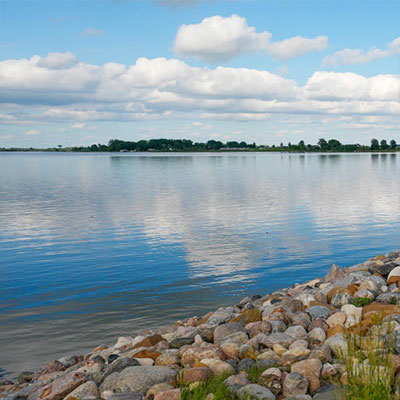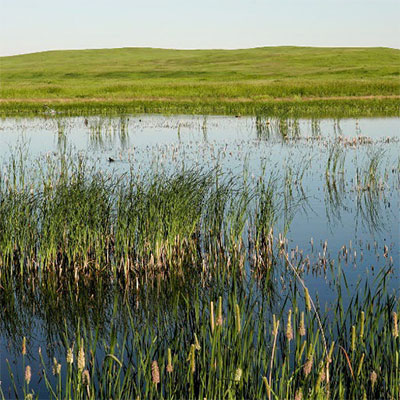Short-billed Dowitcher

NDGF
L 11”, WS 19”, 3.9 oz. Breeding/spring plumage: rufous, white belly, heavy barring. Fall/nonbreeding plumage: drab gray, barring absent.
Status in North Dakota
Migrates through North Dakota in early May through late May, and early July through mid-September.
Reason for SWAP Designation
Regionally or globally imperiled, at-risk based on expert review (SGCN a., c.).
The peak week for Short-billed Dowitcher migration in ND (~26-July) hosts >5% (5.68) of the global population.
The Short-billed Dowitcher is declining precipitously.
Concern for species has elevated in recent years.
Threats
Loss and degradation of wetlands, drainage and wetland consolidation.
Loss of habitat on the breeding and wintering grounds and amplified effects of climate change in arctic and coastal habitats.
Classified as climate-endangered, Short-billed Dowitcher is projected to lose more than half of its current distribution by 2050, with no net gains of new areas (Audubon).
Increasing applications of agrochemicals and adverse impacts to water quality, the wetland vegetative community, and the aquatic invertebrate community.
Short-billed Dowitchers may be exposed to high concentrations of synthetic insecticides in non-buffered cropland ponds during the spring migration.
More frequent or intense harmful algal blooms.
Aquatic nuisance species spreading and damaging wetland ecosystems.
Research and Monitoring
Demographic studies are limited.
Information lacking on migration strategies, stopover sites, and wintering behaviors.
Multiple large-scale shorebird monitoring programs are key sources of information on distribution and population trends.
However, minimal focus has been directed at research or monitoring migrant shorebirds in ND.
Management Recommendations
- Maintain wetland complexes.
- Conserve shallow, working wetlands in cropland.
- Plant vegetative buffer strips around wetlands in cropland.
- Identify and target high priority landscapes, habitats, and stopover sites for protection.
- Conscientious and appropriate application of agrochemicals.




